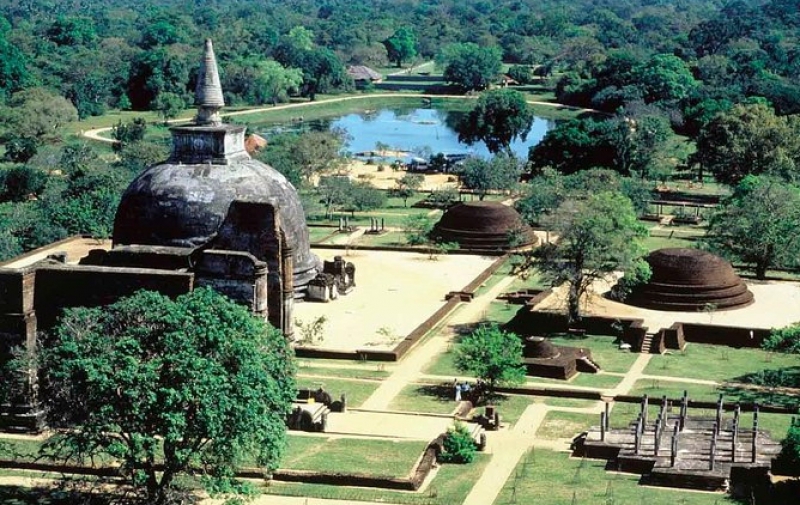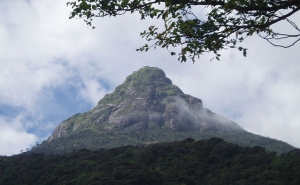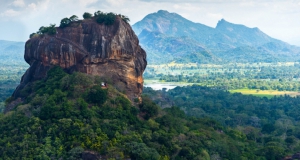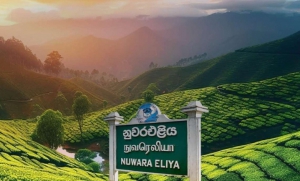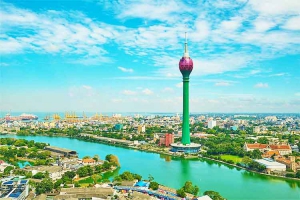Polonnaruwa
The ancient city of Polonnaruwa belongs to the cultural triangle of Sri Lanka along with Anuradhapura and Kandy. Once the capital of the mighty kingdom of Ceylon after the destruction of Anuradhapura, there are now magnificent ruins and architectural witnesses from the decades after 993 to marvel at.
The area of this UNESCO World Heritage Site is huge, home to stone temple figures, ancient irrigation systems, Buddha statues, and 1000-year-old stupas. The years 1154 to 1196 are considered to be the great architectural and artistic heyday of the monastery city. In 1293, Polonnaruwa finally lost its importance with the departure of the regent and fell into a deep slumber, until the British gradually freed the monastery city from the jungle that had overgrown the ruins around 1890.
Things to do in Polonnaruwa
The area of the "Holy City" is pided into four zones: Citadel, Royal City, North Group and South Group. We have compiled some important visitor and behavioural tips below:
- Admission: Tickets for adults cost 25 USD, children pay half.
- For the visit, you definitely need a wheeled vehicle. The most atmospheric way to visit the "Holy City" is by bike, most effectively with a three-wheeler.
- The inpidual sites are quite far apart and are repeatedly interspersed with groves. During the tour, you will also meet monkey families who artfully romp through the trees.
- Our tip: Start as early as possible in the morning to explore the ruins in the incomparable morning light and avoid large crowds of tourists as much as possible. In addition, the temperatures in the morning and evening are also much more pleasant than at lunchtime.
- Attention: it is important to wear appropriate clothing: shorts and off-the-shoulder tops are taboo. In the temples, shoes must be taken off, and it is best to orient oneself to the local believers.
- You should not (let yourself be photographed) in front of statues and should not touch them.
Polonnaruwa Citadel and Palace District
This area was started at the height of Polonnaruwa under Parakramabahu I (1154-1187) and expanded under Nissanka Malla (1187-1196). The massive citadel, the residence of the kings, was originally multi-storey. Today, only the massive walls of the 46×46 m ground floor are preserved, as the floors above were built of wood.
The Citadel is adjoined by the Royal Council Hall and the Prince's Bath. Both buildings impress with artistic friezes of lions, elephants and crocodile-like mythical creatures, which function partly as decoration, partly as gargoyles for the bathing pool.
Nissanka Malla had the palace area expanded to include another Royal Council Hall, a bath and the large audience hall, among other things. This area was started at the height of Polonnaruwa under Parakramabahu I (1154-1187) and expanded under Nissanka Malla (1187-1196).
The massive citadel, the residence of the kings, was originally multi-storey. Today, only the massive walls of the 46×46 m ground floor are preserved, as the floors above were built of wood.
The Citadel is adjoined by the Royal Council Hall and the Prince's Bath. Both buildings impress with artistic friezes of lions, elephants and crocodile-like mythical creatures, which function partly as decoration, partly as gargoyles for the bathing pool.
Polonnaruwa Royal City
On the "Terrace of the Tooth Relic", richly decorated with lions, snakes and flower tendrils, there are various reliquary houses, pavilions and statues. This is where the sacred molar tooth of Buddha was kept when it was brought to Polonnaruwa after the end of Anuradhapura.
In addition to Buddhist sanctuaries, Hindu relics can also be admired in the old royal city, some of which had already been built when the king moved his seat from Anuradhapura to Polonnaruwa. Nissanka Malla had the palace area expanded to include another Royal Council Hall, a bath and the large audience hall, among other things.
Northern Group Polonnaruwas
North of the royal city begins the area of the large monasteries, most of which were also built under Parakrambahu I (1154-1187):
- Menik Vihara, the Gemstone Monastery
- Rankot Vihara with the tallest dagoba in the city
- Alahana Parivena with the huge assembly hall of the monks and the ornate statue house Lankatilaka
- Kiri Vihara
- Gal Vihara with the four Buddha figures carved in granite, which are unparalleled in terms of artistry
- Jetavana Vihara: Although this monastery has largely disappeared, what has been preserved to this day are the stucco decorations and murals of the Tivanka Pilimage statue house
Southern Group Polonnaruwas
2.5 km south of the old royal city are the ruins of the terraced monastery Potgul Vihara.
Best time to visit and climate in Polonnaruwa
December to March are the driest months to travel to Polonnaruwa. The daytime temperatures during this period are around 30 degrees, although it can be very hot with up to 34 degrees, especially in March. At night, the thermometer does not drop below 22 degrees. In the period from December to March, you can continue your journey to the beaches of the south coast of Sri Lanka.
Rainfall is also low from July to September, but nighttime temperatures are slightly higher than in the European winter. If you travel at this time, you can continue your route to the Minneriya National Park and the beaches of the east coast.
Most precipitation falls in the months of April to June and October/November.
Itineraries through Polonnaruwa
There are bus and train connections to Kandy (3.5 hours), Anuradhapura (3 hours) and Colombo (6 hours). However, all train routes are always connected with changes. Both Polonnaruwa Train and Bus Station are 3 km away in the Kaduruwela district.
Polonnaruwa is a day trip destination and is well worth a visit between Sigirya/Dambulla and Gal Oya National Park. A strategic place to stay for a visit to Polonnaruwa is the town of Giritale.


